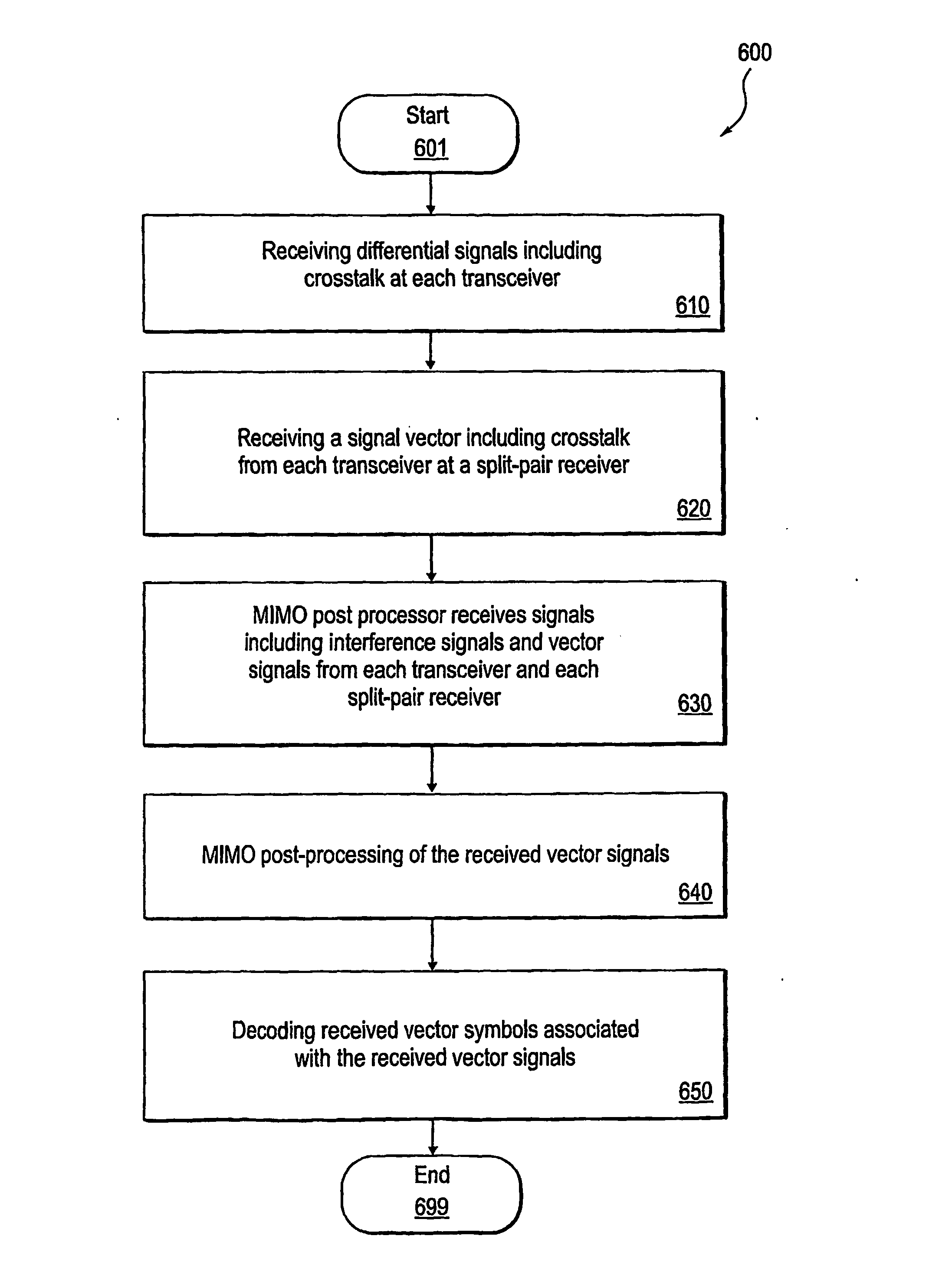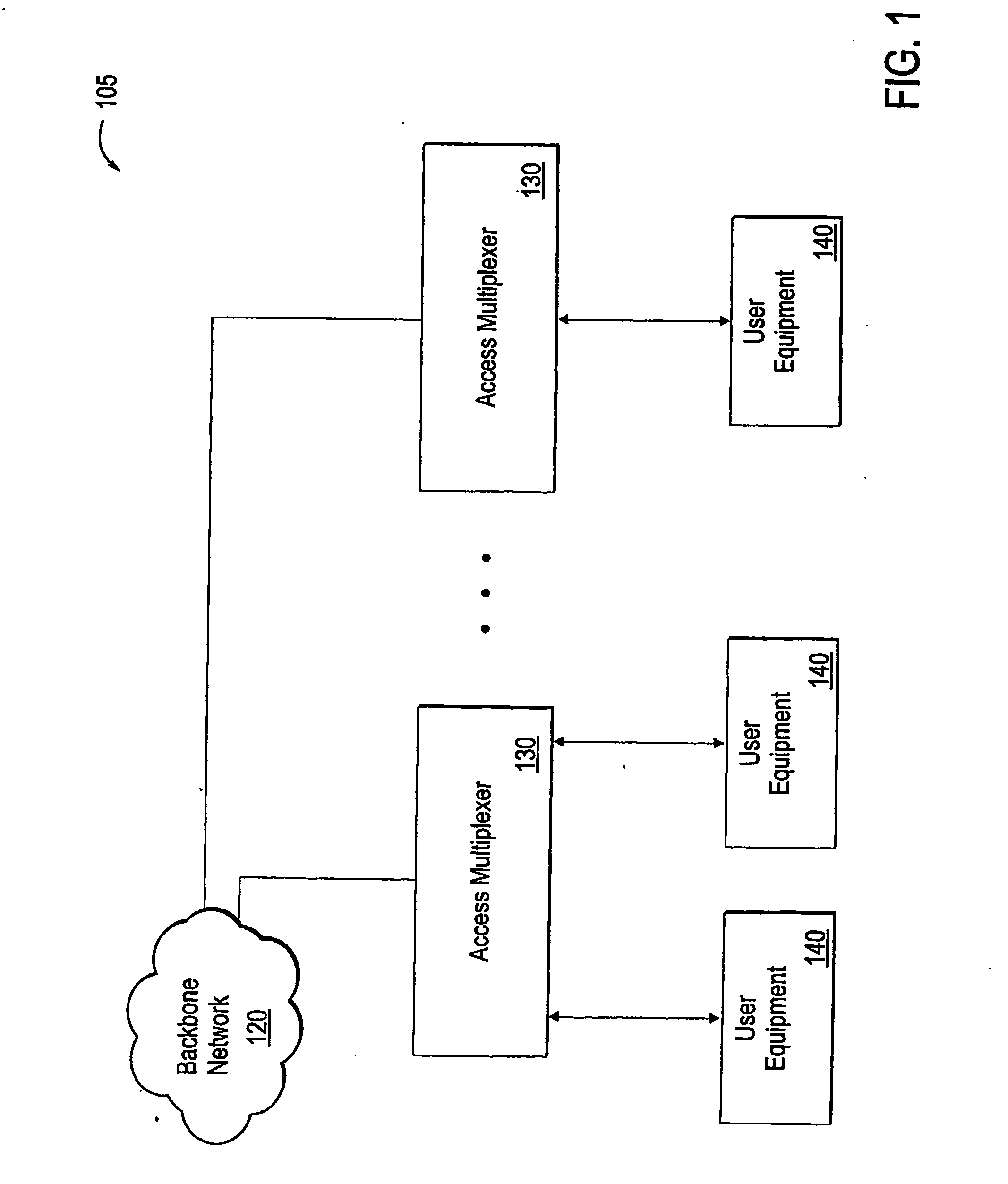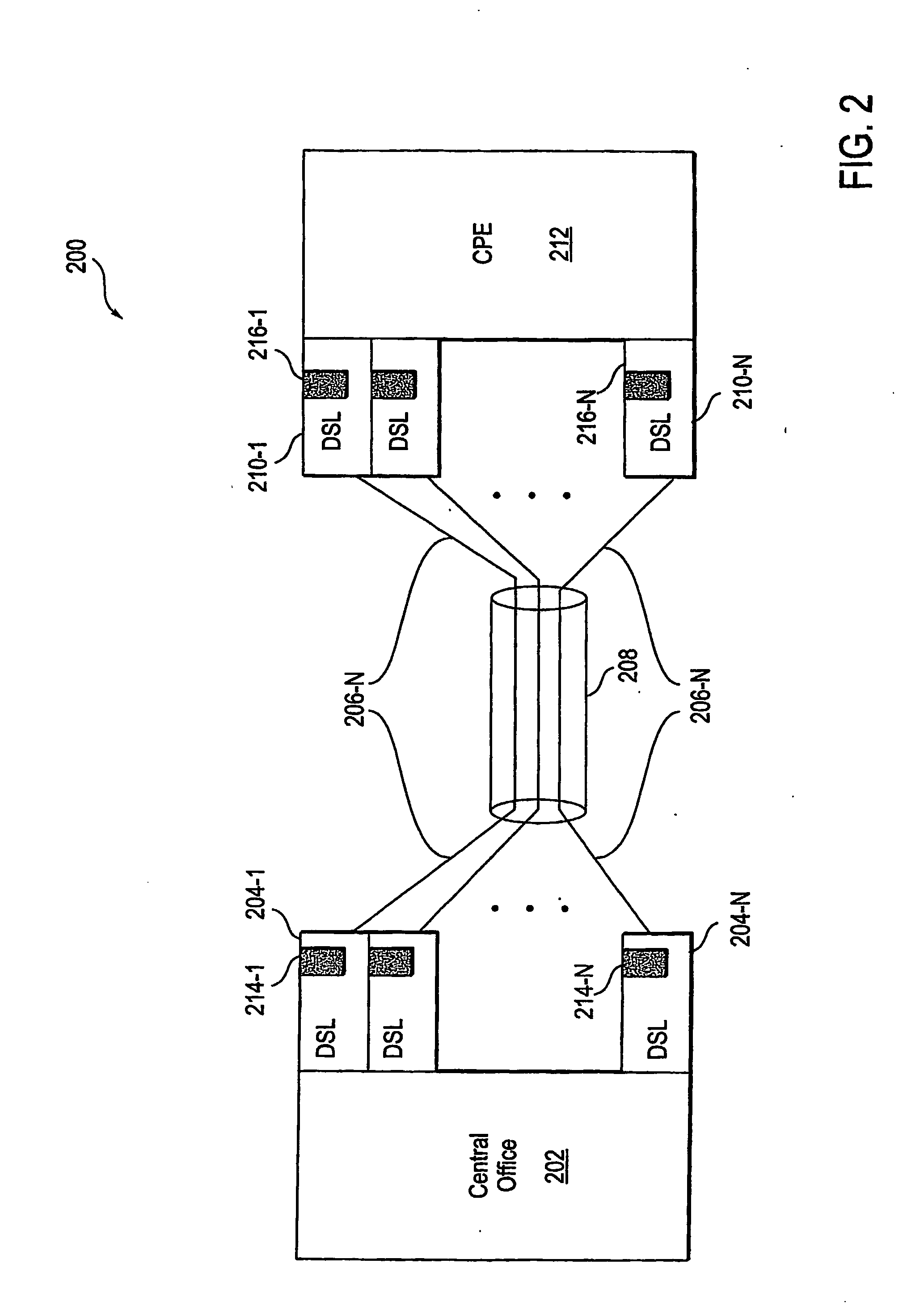Method and system for split-pair reception in twisted-pair communication systems
a communication system and split-pair technology, applied in the field of copper-based communication systems, can solve the problems of increasing the cost of production, increasing the cost of installation, and reducing the service life of the wire, so as to improve the performance of the multi-line transmission system, enhance the crosstalk mitigation ability of the multi-line system, and increase the dimension of the signal space
- Summary
- Abstract
- Description
- Claims
- Application Information
AI Technical Summary
Benefits of technology
Problems solved by technology
Method used
Image
Examples
Embodiment Construction
[0025] A method and system are described for improving the performance of a multiline transmission system by receiving additional signals across copper pairs. For purposes of discussing and illustrating the invention, an example of a multiline system using two copper pairs will be described. However, one skilled in the art will recognize and appreciate that the same methodology can be applied to multiline systems with more than two copper pairs.
[0026] In the following description, for purposes of explanation, numerous specific details are set forth in order to provide a thorough understanding of the present invention. It will be evident, however, to one skilled in the art that the present invention may be practiced without these specific details. In some instances, well-known structures and devices are shown in block diagram form, rather than in detail, in order to avoid obscuring the present invention. These embodiments are described in sufficient detail to enable those skilled in...
PUM
 Login to View More
Login to View More Abstract
Description
Claims
Application Information
 Login to View More
Login to View More - R&D
- Intellectual Property
- Life Sciences
- Materials
- Tech Scout
- Unparalleled Data Quality
- Higher Quality Content
- 60% Fewer Hallucinations
Browse by: Latest US Patents, China's latest patents, Technical Efficacy Thesaurus, Application Domain, Technology Topic, Popular Technical Reports.
© 2025 PatSnap. All rights reserved.Legal|Privacy policy|Modern Slavery Act Transparency Statement|Sitemap|About US| Contact US: help@patsnap.com



